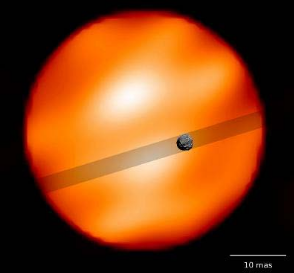Celestron to modify commercial amateur telescope for space use
Capitalism in space: Amateur telescope manufacturer Celestron has signed a deal to adapt one of its more expensive ground-based telescopes for use in space.
Trans Astronautica Corp. announced an agreement Sept. 27 with telescope manufacturer Celestron to develop a space-qualified version of the company’s Rowe-Ackermann Schmidt Astrograph (RASA) ground-based telescope. “We’ve been using Celestron’s RASA telescopes in our space domain awareness and asteroid prospecting systems, and we found them to be very affordable, high-quality optical systems,” Joel Sercel, TransAstra founder and CEO, told SpaceNews. “We looked at the designs and we realized it would not be that hard to adapt them for space use.”
Over the next year, TransAstra plans to modify the RASA telescope design and substitute materials to produce a telescope that can withstand radiation exposure, temperature swings, and the vibration and shock loads of space launch.
TransAstra provides tracking data on space junk to both the commercial and defense industry. It also has a new deal to use its telescopes to provide schools use of these telescopes for educational purposes. The goal is to put this capability into orbit.
The future ramifications however are profound. Once Celestron has a commercial relatively inexpensive telescope capable of operating in space (or on the Moon), it will not take long before customers begin lining up eager to buy and launch it. Think about it: though there will be engineering issues to overcome, the cost of placing one of these telescopes on one of the new commercial lunar landers for operation on the Moon will not be far beyond the budgets of many amateur astronomers, some of whom spend hundreds of thousands of dollars on their own ground-based observatories.
Capitalism in space: Amateur telescope manufacturer Celestron has signed a deal to adapt one of its more expensive ground-based telescopes for use in space.
Trans Astronautica Corp. announced an agreement Sept. 27 with telescope manufacturer Celestron to develop a space-qualified version of the company’s Rowe-Ackermann Schmidt Astrograph (RASA) ground-based telescope. “We’ve been using Celestron’s RASA telescopes in our space domain awareness and asteroid prospecting systems, and we found them to be very affordable, high-quality optical systems,” Joel Sercel, TransAstra founder and CEO, told SpaceNews. “We looked at the designs and we realized it would not be that hard to adapt them for space use.”
Over the next year, TransAstra plans to modify the RASA telescope design and substitute materials to produce a telescope that can withstand radiation exposure, temperature swings, and the vibration and shock loads of space launch.
TransAstra provides tracking data on space junk to both the commercial and defense industry. It also has a new deal to use its telescopes to provide schools use of these telescopes for educational purposes. The goal is to put this capability into orbit.
The future ramifications however are profound. Once Celestron has a commercial relatively inexpensive telescope capable of operating in space (or on the Moon), it will not take long before customers begin lining up eager to buy and launch it. Think about it: though there will be engineering issues to overcome, the cost of placing one of these telescopes on one of the new commercial lunar landers for operation on the Moon will not be far beyond the budgets of many amateur astronomers, some of whom spend hundreds of thousands of dollars on their own ground-based observatories.

